Analysis of the LCA-Emergy and Carbon Emissions Sustainability Assessment of a Building System with Coupled Energy Storage Modules
Abstract
:1. Introduction
2. Material and Methods
2.1. Research Framework
2.2. LCA-Emergy Method
2.2.1. LCA Approach
2.2.2. Emergy Concept
2.3. LCA-Carbon Footprint Method
2.4. Neural Network Method
- (1)
- Model Training Process:
- (2)
- Test Dataset:
- (3)
- Model Evaluation Metrics:
3. Case Situation
Basic Introduction and Date Collection
4. Results and Discussion
4.1. LCA-Emergy Analysis
4.1.1. Dominated Contributor of Building System
4.1.2. Comparison of Emergy Parameters Before and After Adding the Energy Storage Module
4.1.3. Sensitivity Analysis
4.2. LCA-Carbon Footprint Analysis
4.2.1. LCA-Carbon Footprint Analysis of Entire Life Cycle
4.2.2. Energy Storage Unit Efficiency Analysis
- A.
- Basic Conditions:
- The average electricity price for the industrial building is 1 yuan/kWh.
- The carbon emission factor of the local power grid is 0.5 kg CO2/kWh (i.e., 0.5 kg of carbon emissions are produced for every kilowatt-hour of electricity consumed).
- The average daily electricity consumption of the building is 5000 kWh.
- B.
- Specific Calculation Results:
- (1)
- Energy Savings (Electricity Cost Savings):
- (2)
- Carbon Emission Reduction:
- (3)
- Electricity Cost Savings:
4.2.3. Sensitivity Analysis from Carbon Footprint View
4.3. Neural Network Predictive Analysis
5. Improvement Discussion
6. Conclusions
- The entire building system’s emergy is primarily influenced by the building material stage and the building operation stage, and the changes in both present an inverse trend. In the fifth year, the emergy proportion of the building material stage accounted for 57% of the total, while the operation stage accounted for 32%; as the usage time extends, the respective figures become 36.5% and 47%, 21% and 69%, and 8.7% and 83.9%.
- With the operation of the building system, the system’s losses and consumption increase, leading to a gradual increase in the Environmental Load Rate (ELR), while the Sustainable Parameter (ESI) decreases progressively.
- Overall, the building material stage, construction stage, and building operation stage dominate. As the usage cycle increases, the carbon emissions in the building operation stage significantly increase, reaching 1193.06 t, 2795.1 t, 4794.02 t, 6633.22 t, and 12,100 t, respectively.
- Calculating for building operation periods of 5, 10, 20, 30, and 50 years, the overall carbon emission reduction rates after adding an energy storage module are 39.4%, 33.6%, 39.2%, 42.5%, and 38.8%, respectively. It can be observed that the energy storage module has a significant impact on the sustainability of the building system.
- Taking the 30-year cycle trend as an example, from the ESI perspective, as the usage cycle of industrial buildings increases, the ESI index gradually decreases, indicating an aging increase in the entire building system. The system’s state is still moving towards a less sustainable level. The trend of carbon footprint change shows an increasing pattern, with a faster increase in carbon emissions in the first 20 years, and a more stable increase in the latter 10 years.
Author Contributions
Funding
Data Availability Statement
Conflicts of Interest
References
- Goubran, S.; Walker, T.; Cucuzzella, C.; Schwartz, T. Green building standards and the United Nations’ Sustainable Development Goals. J. Environ. Manag. 2023, 326, 116552. [Google Scholar] [CrossRef]
- Guidetti, E.; Ferrara, M. Embodied energy in existing buildings as a tool for sustainable intervention on urban heritage. Sustain. Cities Soc. 2023, 88, 104284. [Google Scholar] [CrossRef]
- Noyce, G.L.; Smith, A.J.; Kirwan, M.L.; Rich, R.L.; Megonigal, J.P. Oxygen priming induced by elevated CO2 reduces carbon accumulation and methane emissions in coastal wetlands. Nat. Geosci. 2023, 16, 63–68. [Google Scholar] [CrossRef]
- Jiang, P.; Sonne, C.; You, S. Dynamic Carbon-Neutrality Assessment Needed to Tackle the Impacts of Global Crises. Environ. Sci. Technol. 2022, 56, 9851–9853. [Google Scholar] [CrossRef] [PubMed]
- Chen, R.; Tsay, Y.-S.; Zhang, T. A multi-objective optimization strategy for building carbon emission from the whole life cycle perspective. Energy 2023, 262, 125373. [Google Scholar] [CrossRef]
- Du, Q.; Wang, Y.; Pang, Q.; Hao, T.; Zhou, Y. The dynamic analysis on low-carbon building adoption under emission trading scheme. Energy 2023, 263, 125946. [Google Scholar] [CrossRef]
- Zhang, J.; Ma, L. Urban ecological security dynamic analysis based on an innovative emergy ecological footprint method. Environ. Dev. Sustain. 2021, 23, 16163–16191. [Google Scholar] [CrossRef]
- Zhang, J.; Ma, L. Environmental Sustainability Assessment of a New Sewage Treatment Plant in China Based on Infrastructure Construction, Operation Phases, Emergy Analysis. Water 2020, 12, 484. [Google Scholar] [CrossRef]
- Oliveira, M.; Cocozza, A.; Zucaro, A.; Santagata, R.; Ulgiati, S. Circular economy in the agro-industry: Integrated environmental assessment of dairy products. Renew. Sustain. Energy Rev. 2021, 148, 111314. [Google Scholar] [CrossRef]
- Zhang, J.; Srinivasan, R.S.; Peng, C. A Systematic Approach to Calculate Unit Emergy Values of Cement Manufacturing in China Using Consumption Quota of Dry and Wet Raw Materials. Buildings 2020, 10, 128. [Google Scholar] [CrossRef]
- Zhang, J.; Zhang, H.; Asutosh, A.T.; Sun, N.; Fu, X.; Wang, H.; Li, X. Ecological sustainability assessment of building glass industry in China based on the point of view of raw material emergy and chemical composition. Environ. Sci. Pollut. Res. 2023, 30, 40670–40697. [Google Scholar] [CrossRef] [PubMed]
- Alibaba, M.; Pourdarbani, R. Mohammad Hasan Khoshgoftar Manesh, Guillermo Valencia Ochoa, Jorge Duarte Forero, Thermodynamic, exergo-economic and exergo-environmental analysis of hybrid geothermal-solar power plant based on ORC cycle using emergy concept. Heliyon 2020, 6, e03758. [Google Scholar] [CrossRef]
- Yadegaridehkordi, E.; Hourmand, M.; Nilashi, M.; Alsolami, E.; Samad, S.; Mahmoud, M.; Alarood, A.A.; Zainol, A.; Majeed, H.D.; Shuib, L. Assessment of sustainability indicators for green building manufacturing using fuzzy multi-criteria decision making approach. J. Clean. Prod. 2020, 277, 122905. [Google Scholar] [CrossRef]
- Paneru, S.; Jahromi, F.F.; Hatami, M.; Roudebush, W.; Jeelani, I. Integration of Emergy Analysis with Building Information Modeling. Sustainability 2021, 13, 7990. [Google Scholar] [CrossRef]
- Wang, J.; Xu, S.; Ma, G.; Gou, Q.; Zhao, P.; Jia, X. Emergy analysis and optimization for a solar-driven heating and cooling system integrated with air source heat pump in the ultra-low energy building. J. Build. Eng. 2023, 63, 105467. [Google Scholar] [CrossRef]
- Thomas, T.A. Praveen. Emergy parameters for ensuring sustainable use of building materials. J. Clean. Prod. 2020, 276, 122382. [Google Scholar] [CrossRef]
- Yi, H.; Srinivasan, R.S.; Braham, W.W.; Tilley, D.R. An ecological understanding of net-zero energy building: Evaluation of sustainability based on emergy theory. J. Clean. Prod. 2017, 143, 654–671. [Google Scholar] [CrossRef]
- Li, D.; Du, B.; Zhu, J. Evaluating old community renewal based on emergy analysis: A case study of Nanjing. Ecol. Model. 2021, 449, 109550. [Google Scholar] [CrossRef]
- Chen, X.; Wang, H.; Zhang, J.; Zhang, H.; Asutosh, A.T.; Wu, G.; Wei, G.; Shi, Y.; Yang, M. Sustainability Study of a Residential Building near Subway Based on LCA-Emergy Method. Buildings 2022, 12, 679. [Google Scholar] [CrossRef]
- Cui, W.; Hong, J.; Liu, G.; Li, K.; Huang, Y.; Zhang, L. Co-Benefifits Analysis of Buildings Based on Different Renewal Strategies: The Emergy-Lca Approach. Int. J. Environ. Res. Public Health 2021, 18, 592. [Google Scholar] [CrossRef] [PubMed]
- Wang, H.; Liu, Y.; Zhang, J.; Zhang, H.; Huang, L.; Xu, D.; Zhang, C. Sustainability Investigation in the Building Cement Production System Based on the LCA-Emergy Method. Sustainability 2022, 14, 16380. [Google Scholar] [CrossRef]
- Hu, S.; Zhang, Y.; Yang, Z.; Yan, D.; Jiang, Y. Challenges and opportunities for carbon neutrality in China’s building sector—Modelling and data. Build. Simul. 2022, 15, 1899–1921. [Google Scholar] [CrossRef]
- Zhang, N.; Luo, Z.; Liu, Y.; Feng, W.; Zhou, N.; Yang, L. Towards low-carbon cities through building-stock-level carbon emission analysis: A calculating and mapping method. Sustain. Cities Soc. 2022, 78, 103633. [Google Scholar] [CrossRef]
- Lou, Y.; Yang, Y.; Ye, Y.; He, C.; Zuo, W. The economic impacts of carbon emission trading scheme on building retrofits: A case study with U.S. medium office buildings. Build. Environ. 2022, 221, 109311. [Google Scholar] [CrossRef]
- Liu, W.; Zuo, B.; Qu, C.; Ge, L.; Shen, Q. A reasonable distribution of natural landscape: Utilizing green space and water bodies to reduce residential building carbon emissions. Energy Build. 2022, 267, 112150. [Google Scholar] [CrossRef]
- Wang, X.; Du, Q.; Lu, C.; Li, J. Exploration in carbon emission reduction effect of low-carbon practices in prefabricated building supply chain. J. Clean. Prod. 2022, 368, 133153. [Google Scholar] [CrossRef]
- Grinham, J.; Fjeldheim, H.; Yan, B.; Helge, T.D.; Edwards, K.; Hegli, T.; Malkawi, A. Zero-carbon balance: The case of HouseZero. Build. Environ. 2022, 207, 108511. [Google Scholar] [CrossRef]
- Gan, L.; Liu, Y.; Shi, Q.; Cai, W.; Ren, H. Regional inequality in the carbon emission intensity of public buildings in China. Build. Environ. 2022, 225, 109657. [Google Scholar] [CrossRef]
- Huo, T.; Ma, Y.; Xu, L.; Feng, W.; Cai, W. Carbon emissions in China’s urban residential building sector through 2060: A dynamic scenario simulation. Energy 2022, 254, 124395. [Google Scholar] [CrossRef]
- Gan, L.; Ren, H.; Cai, W.; Wu, K.; Liu, Y.; Liu, Y. Allocation of carbon emission quotas for China’s provincial public buildings based on principles of equity and efficiency. Build. Environ. 2022, 216, 108994. [Google Scholar] [CrossRef]
- Zhang, Y.; Jiang, X.; Cui, C.; Skitmore, M. BIM-based approach for the integrated assessment of life cycle carbon emission intensity and life cycle costs. Build. Environ. 2022, 226, 109691. [Google Scholar] [CrossRef]
- Kang, Y.; Xu, W.; Wu, J.; Li, H.; Liu, R.; Lu, S.; Rong, X.; Xu, X.; Pang, F. Study on comprehensive whole life carbon emission reduction potential and economic feasibility impact based on progressive energy-saving targets: A typical renovated ultra-low energy office. J. Build. Eng. 2022, 58, 105029. [Google Scholar] [CrossRef]
- Röck, M.; Saade, M.R.M.; Balouktsi, M.; Rasmussen, F.N.; Birgisdottir, H.; Frischknecht, R.; Habert, G.; Lützkendorf, T.; Passer, A. Embodied GHG emissions of buildings—The hidden challenge for effffective climate change mitigation. Appl. Energy 2020, 258, 114107. [Google Scholar] [CrossRef]
- Li, B.; Pan, Y.; Li, L.; Kong, M. Life Cycle Carbon Emission Assessment of Building Refurbishment: A Case Study of Zero-Carbon Pavilion in Shanghai Yangpu Riverside. Appl. Sci. 2022, 12, 9989. [Google Scholar] [CrossRef]
- Petrović, B.; Zhang, X.; Eriksson, O.; Wallhagen, M. Life Cycle Cost Analysis of a Single-Family House in Sweden. Buildings 2021, 11, 215. [Google Scholar] [CrossRef]
- Li, X.-J.; Xie, W.-J.; Xu, L.; Li, L.-L.; Jim, C.Y.; Wei, T.-B. Holistic life-cycle accounting of carbon emissions of prefabricated buildings using LCA and BIM. Energy Build. 2022, 266, 112136. [Google Scholar] [CrossRef]
- Li, H.; Luo, Z.; Xu, X.; Cang, Y.; Yang, L. Assessing the embodied carbon reduction potential of straw bale rural houses by hybrid life cycle assessment: A four-case study. J. Clean. Prod. 2021, 303, 127002. [Google Scholar] [CrossRef]
- Le, L.T.; Nguyen, H.; Dou, J.; Zhou, J. A Comparative Study of PSO-ANN, GA-ANN, ICA-ANN, and ABC-ANN in Estimating the Heating Load of Buildings’ Energy Efficiency for Smart City Planning. Appl. Sci. 2019, 9, 2630. [Google Scholar] [CrossRef]
- Li, K.; Hu, C.; Liu, G.; Xue, W. Building’s electricity consumption prediction using optimized artifificial neural networks and principal component analysis. Energy Build. 2015, 108, 106–113. [Google Scholar] [CrossRef]
- Yang, T.; Dong, Y.; Tang, B.; Xu, Z. Developing a dynamic life cycle assessment framework for buildings through integrating building information modeling and building energy modeling program. Sci. Total Environ. 2024, 946, 174284. [Google Scholar] [CrossRef] [PubMed]
- Andersen, C.E.; Hoxha, E.; Rasmussen, F.N.; Sorensen, C.G.; Birgisdottir, H. Temporal considerations in life cycle assessments of wooden buildings: Implications for design incentives. J. Clean. Prod. 2024, 445, 141260. [Google Scholar] [CrossRef]
- Odum, H.T. Environmental Accounting. Emergy and Environmental Decision Making; John and Wiley and Sons: Hoboken, NJ, USA, 1996; pp. 32–34. [Google Scholar]
- GB/T 51366-2019; Standard for Building Carbon Emission Calculation in China. Available online: http://www.ntgh.com.cn/News_Info.aspx?id=2367 (accessed on 2 January 2025).
- ISO 14040:2006; Environmental Management—Life Cycle Assessment, International Organization for Standardization. Available online: https://www.iso.org/standard/37456.html (accessed on 2 January 2025).
- CPCD. China Products Carbon Footprint Factors Database. Available online: https://lca.cityghg.com/ (accessed on 2 January 2025).
- Asvadi-Kermani, O.; Momeni, H. A constrained distributed time-series neural network MPC approach for HVAC system energy saving in a medium-large building. J. Build. Perform. Simul. 2021, 14, 383–400. [Google Scholar] [CrossRef]
- Khosravani, H.R.; Del Mar Castilla, M.; Berenguel, M.; Ruano, A.E.; Ferreira, P.M. A Comparison of Energy Consumption Prediction Models Based on Neural Networks of a Bioclimatic Building. Energies 2016, 9, 57. [Google Scholar] [CrossRef]
- Moon, J.W.; Lee, J.-H.; Kim, S. Evaluation of Artificial Neural Network-Based Temperature Control for Optimum Operation of Building Envelopes. Energies 2014, 7, 7245–7265. [Google Scholar] [CrossRef]
- Maltais, L.-G.; Gosselin, L. Predictability analysis of domestic hot water consumption with neural networks: From single units to large residential buildings. Energy 2021, 229, 120658. [Google Scholar] [CrossRef]

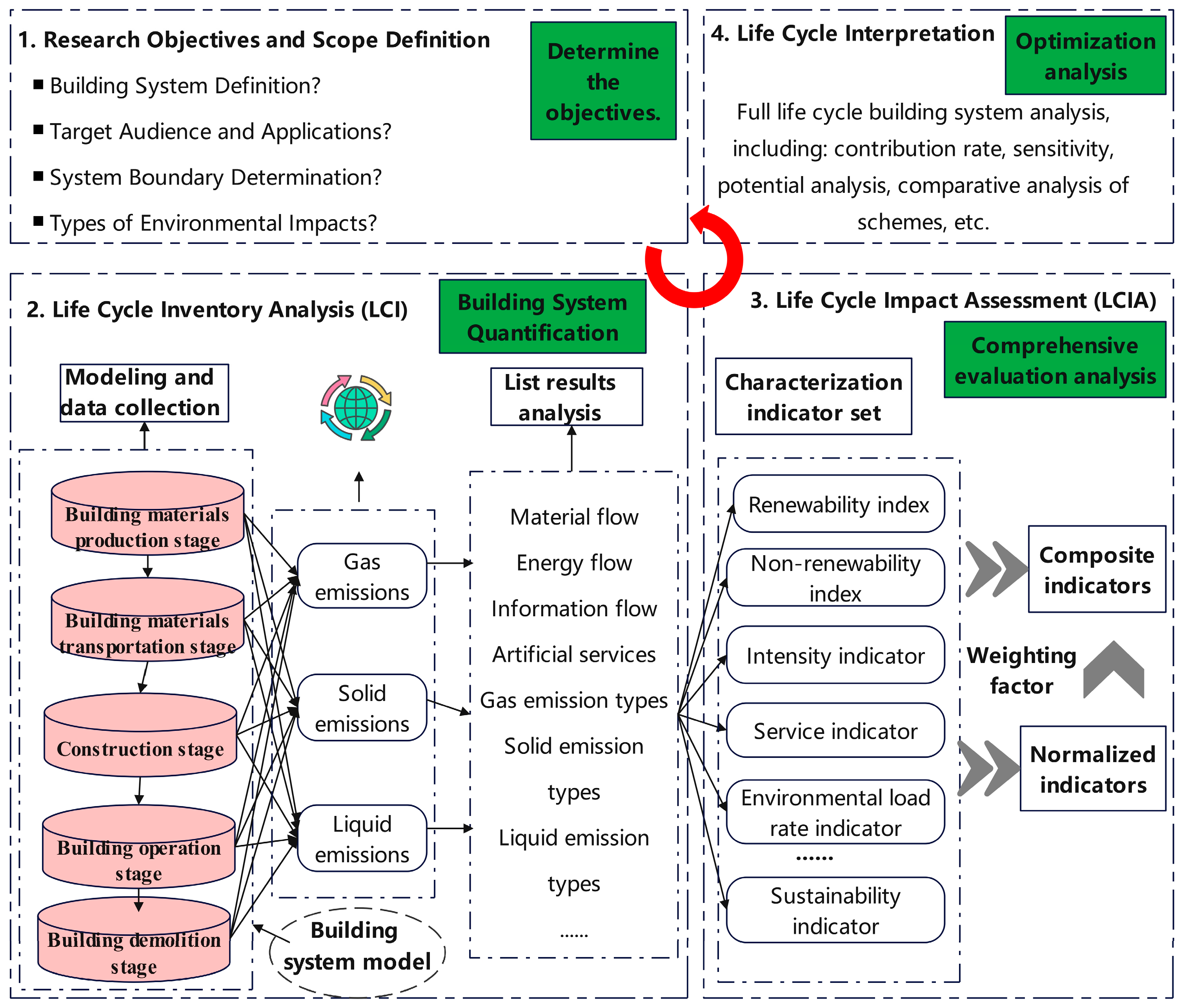

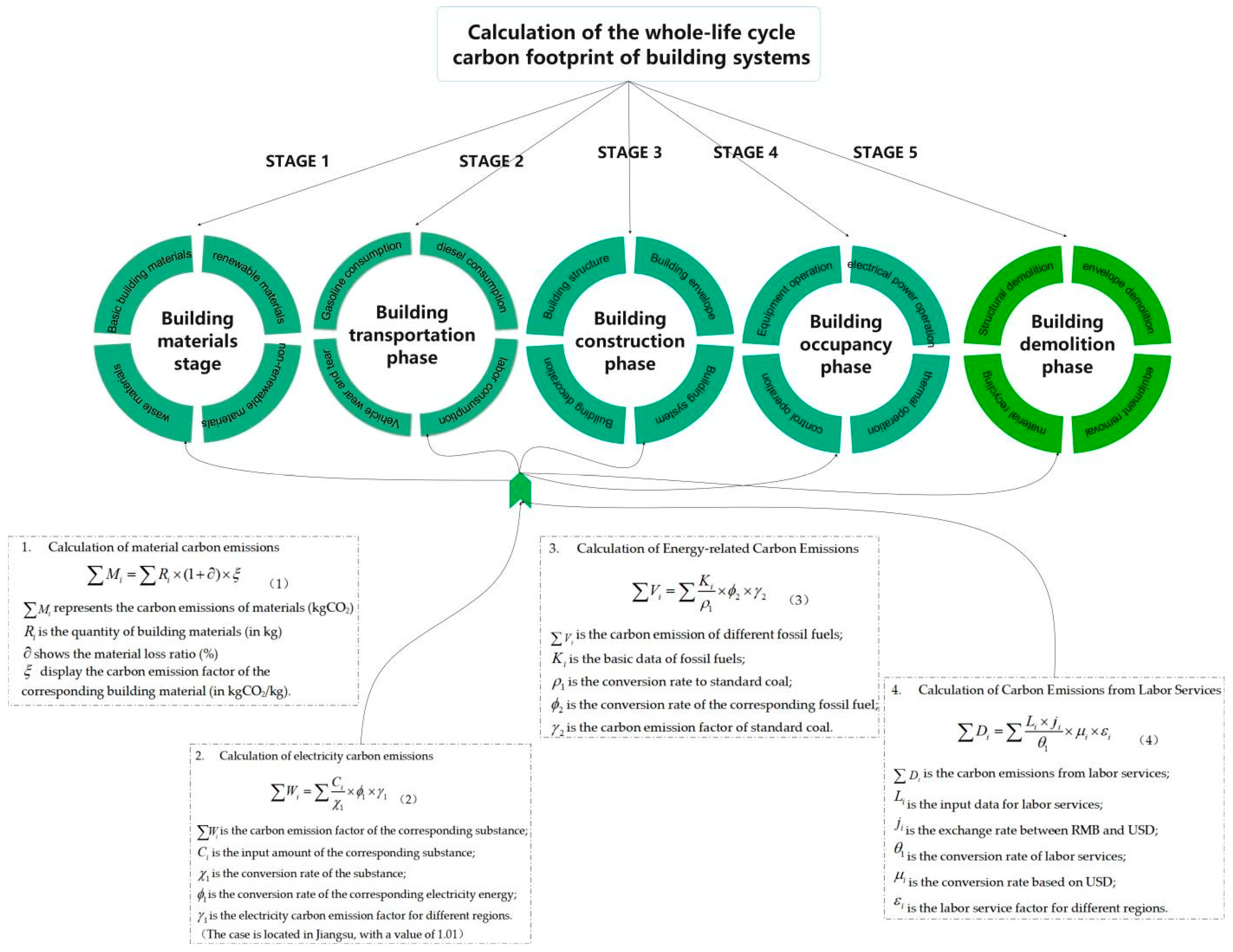

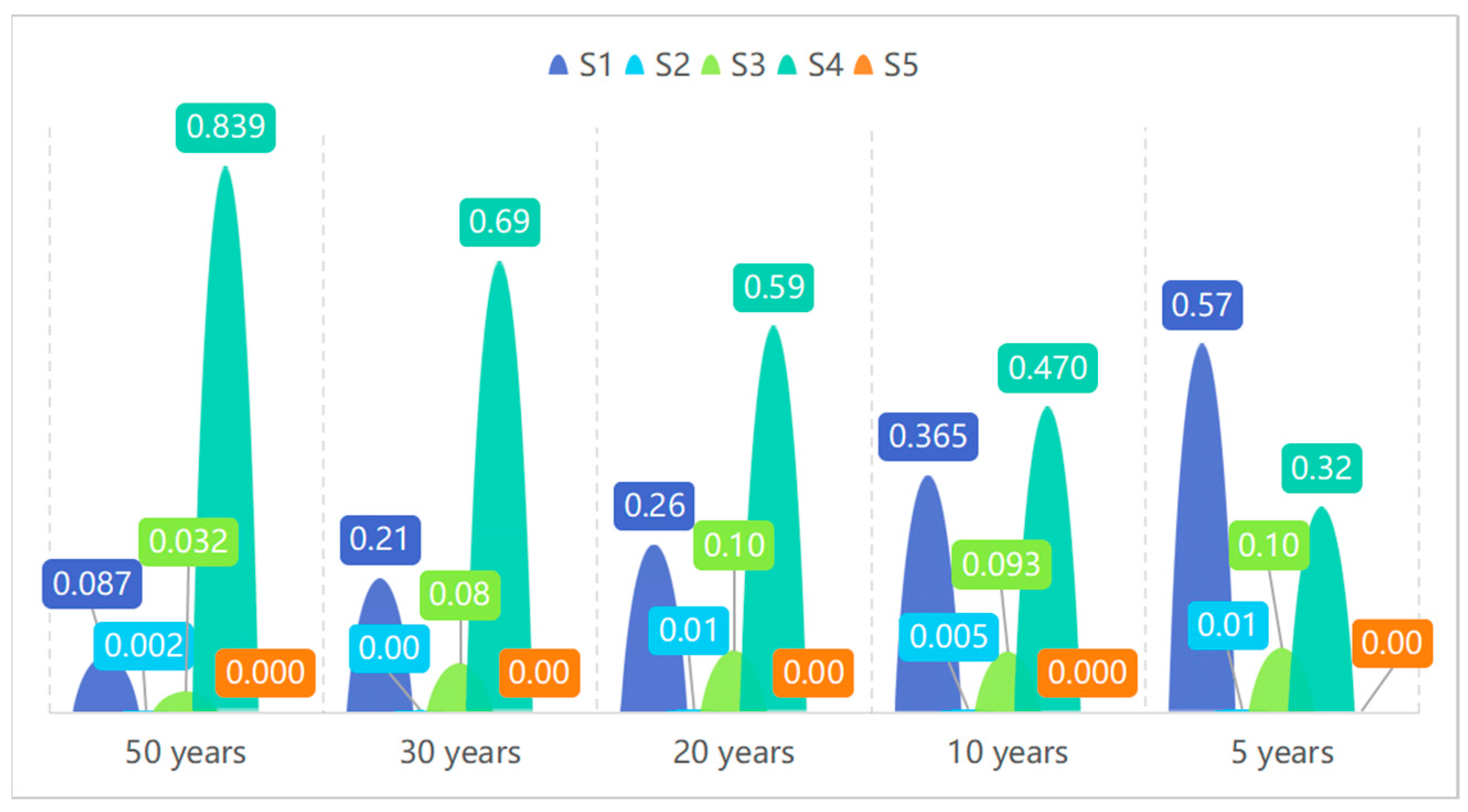


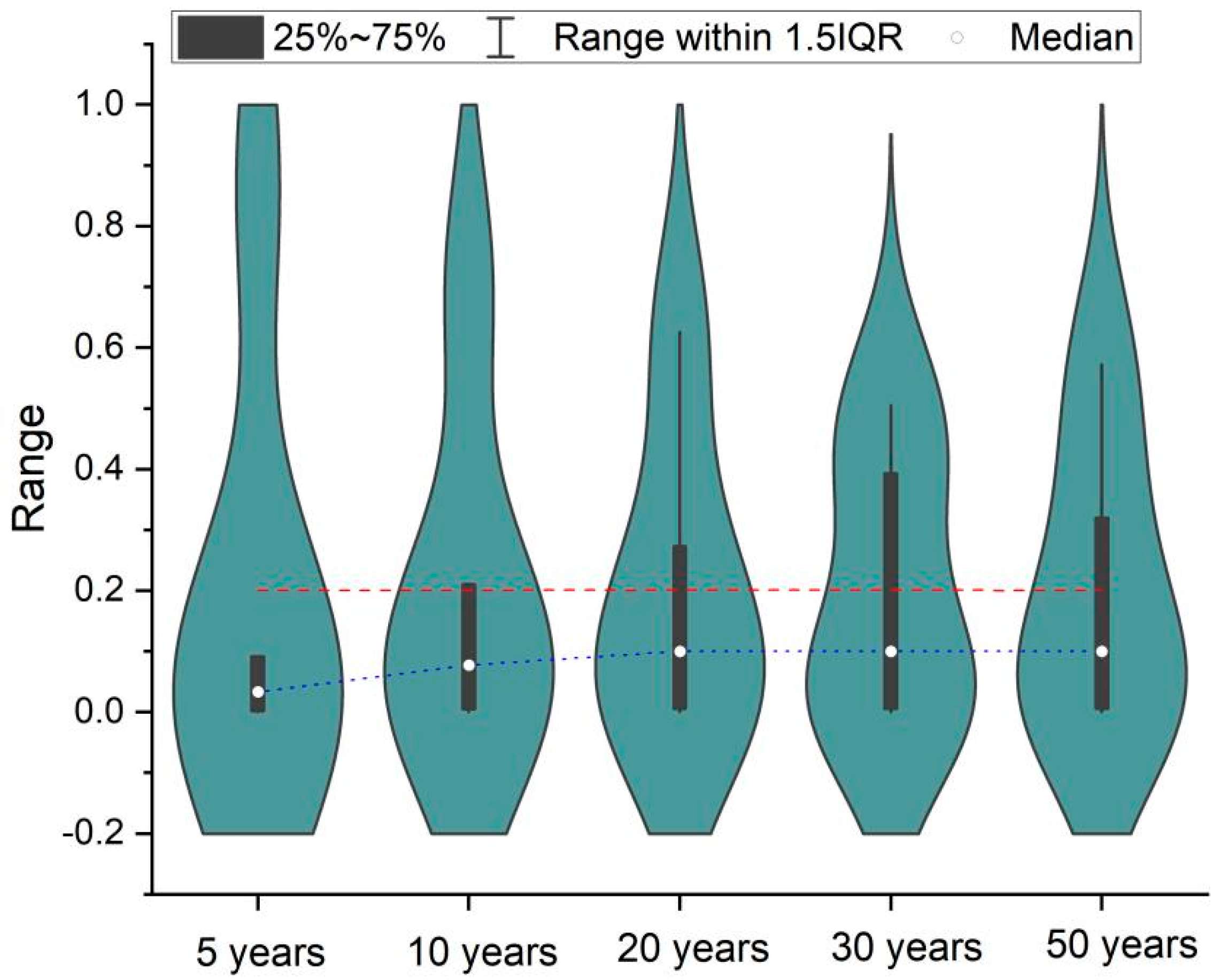


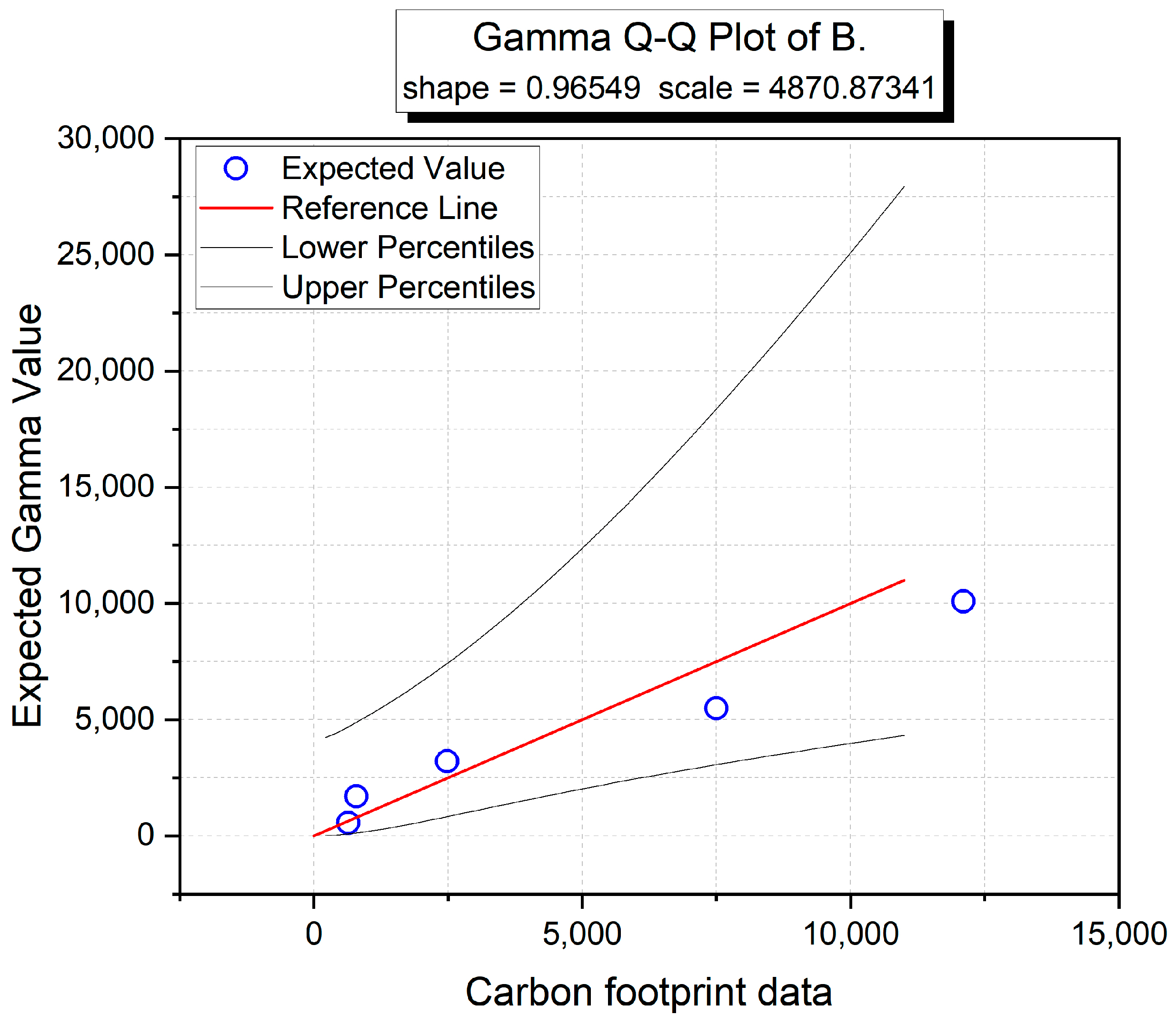


| No. | Parameter Type | Specific Data |
|---|---|---|
| 1 | Energy Storage System Total Capacity | 1000 kWh |
| 2 | Battery Type | LiFePO₄ |
| 3 | Number of Battery Modules | 20 |
| 4 | Maximum Discharge Power | 500 kW |
| 5 | Conversion Efficiency | Approximately 90% |
| 6 | Battery Management System | Monitoring, diagnosis, and protection functions |
| 7 | Environmental Adaptability | Operational from −10 °C to 50 °C |
| 8 | Floor Area | Approximately 100 square meters |
| 9 | Energy Storage Medium | Lithium-ion Battery |
| 10 | Single Battery Module Capacity | 50 kWh |
| 11 | System Voltage | 480 V DC |
| 12 | Maximum Charging Power | 500 kW |
| 13 | Battery Cycle Life | ≥4000 cycles (at 80% Depth of Discharge) |
| 14 | System Redundancy Design | N + 1 Redundancy |
| 15 | Safety Features | Protection against overcharging, overdischarging, short circuit, and overtemperature |
| 16 | Service Life | 10 years |
Disclaimer/Publisher’s Note: The statements, opinions and data contained in all publications are solely those of the individual author(s) and contributor(s) and not of MDPI and/or the editor(s). MDPI and/or the editor(s) disclaim responsibility for any injury to people or property resulting from any ideas, methods, instructions or products referred to in the content. |
© 2025 by the authors. Licensee MDPI, Basel, Switzerland. This article is an open access article distributed under the terms and conditions of the Creative Commons Attribution (CC BY) license (https://creativecommons.org/licenses/by/4.0/).
Share and Cite
Zhang, J.; Pan, Z.; Li, Y. Analysis of the LCA-Emergy and Carbon Emissions Sustainability Assessment of a Building System with Coupled Energy Storage Modules. Buildings 2025, 15, 151. https://doi.org/10.3390/buildings15020151
Zhang J, Pan Z, Li Y. Analysis of the LCA-Emergy and Carbon Emissions Sustainability Assessment of a Building System with Coupled Energy Storage Modules. Buildings. 2025; 15(2):151. https://doi.org/10.3390/buildings15020151
Chicago/Turabian StyleZhang, Junxue, Zhihong Pan, and Yingnan Li. 2025. "Analysis of the LCA-Emergy and Carbon Emissions Sustainability Assessment of a Building System with Coupled Energy Storage Modules" Buildings 15, no. 2: 151. https://doi.org/10.3390/buildings15020151
APA StyleZhang, J., Pan, Z., & Li, Y. (2025). Analysis of the LCA-Emergy and Carbon Emissions Sustainability Assessment of a Building System with Coupled Energy Storage Modules. Buildings, 15(2), 151. https://doi.org/10.3390/buildings15020151








